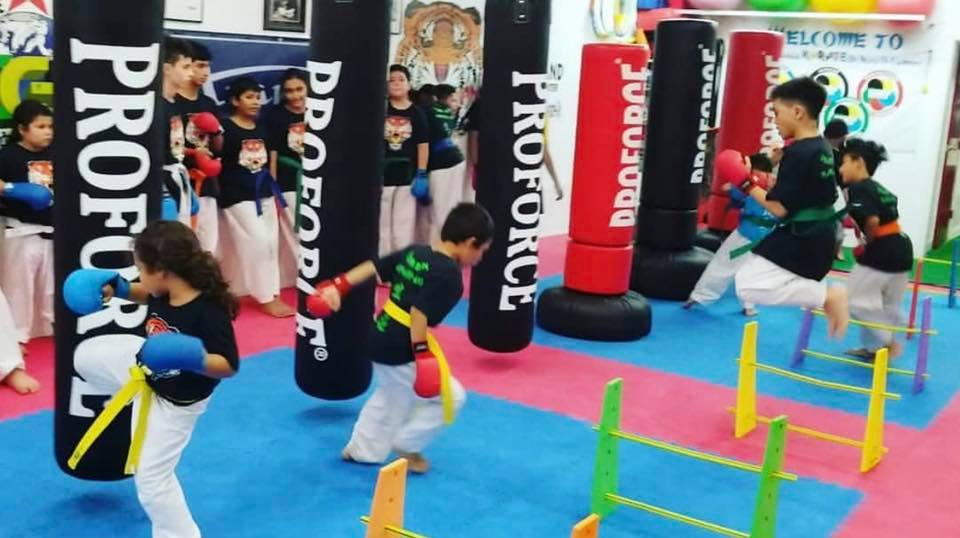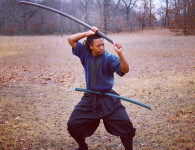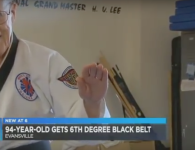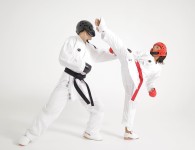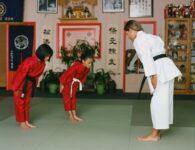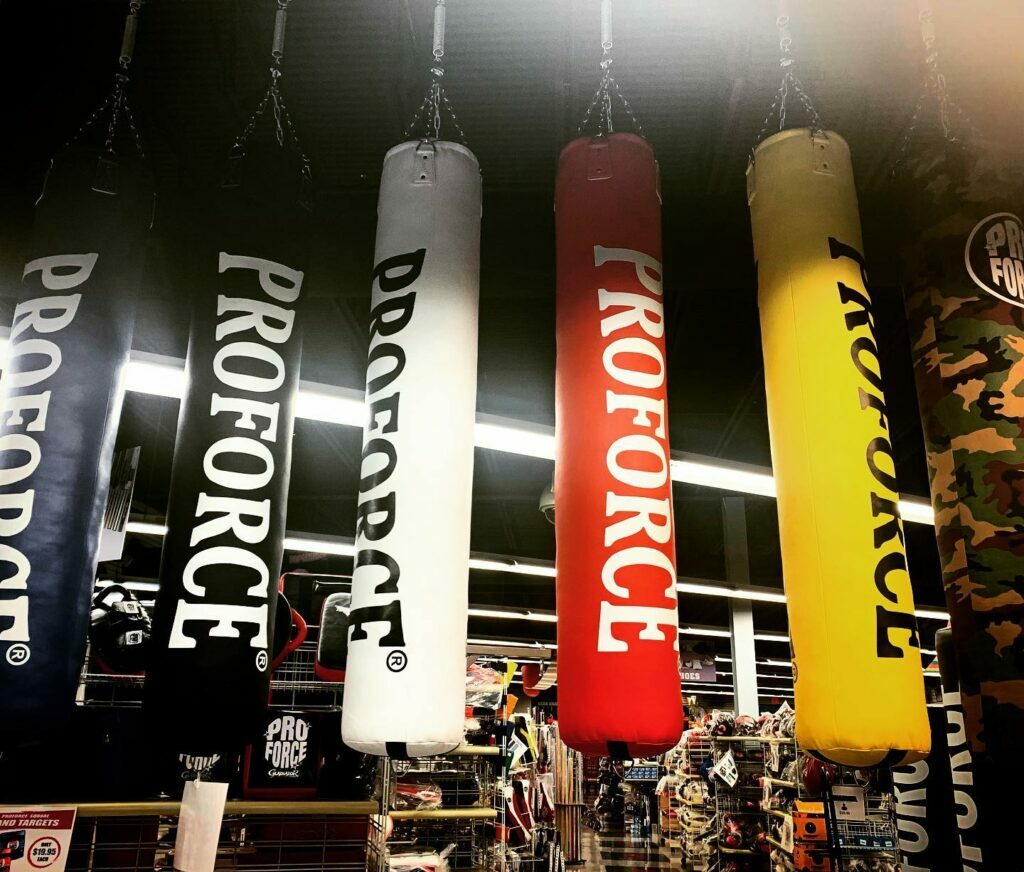
If you’re looking to purchase a boxing bag for your martial arts training, you two have two options: a hanging heavy bag, or a freestanding bag. Both heavy bags and standings bags have their benefits. Deciding which bag will be best for your MMA, kickboxing, and boxing training will depend on your training goals, style, and resources.
Let’s break down the differences between heavy bags and freestanding bags — and the differences between heavy bag training and freestanding bag training — to help you make your decision.
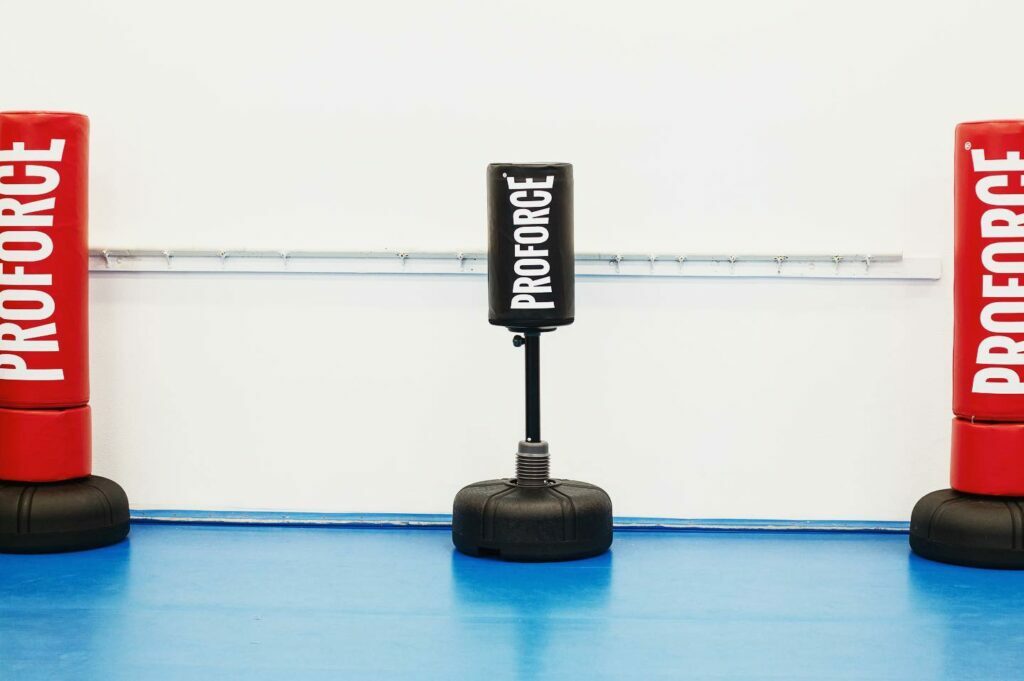
What are heavy bags?
The heavy bag is a fundamental piece of training equipment in a number of combat sports and martial arts, including boxing, kickboxing, Muay Thai and, more recently, mixed martial arts. The exact size and shape of a heavy bag can vary between different martial arts. Muay Thai heavy bags, for example, are usually thinner and longer to support lower body striking. Boxing heavy bags, which are designed for punching, tend to be shorter and thicker. Generally, though, all heavy bags are densely stuffed cylindrical bags designed to withstand the wear and tear of punching and/or kicking from beginners and professional fighters alike. They can either be suspended from the ceiling or hung from specifically designed heavy bag stands.
Popular options include the ProForce® Thunder Heavy Bag and the ProForce® Thunder Muay Thai Heavy Bag.

What are freestanding bags?
Freestanding bags are training bags that are attached to a podium. Depending on the make, this base can be filled with sand or water to keep the bag anchored and prevent it from tipping during training. While the structure, shape, and function of freestanding bags makes them a little lighter and less dense than traditional heavy bags, they’re still very solid and durable. Freestanding bags can be used for cardio kickboxing, conditioning drills, and light technique training for boxing, kickboxing, and MMA.
Popular freestanding bags include the ProForce® Tower Free Standing Bag.
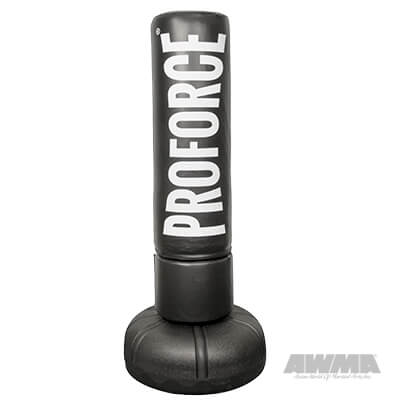
Heavy Bag Training
Heavy bags are extremely durable and their swinging design more accurately recreates the rhythm of fighting. This makes them an ideal training tool for competitive boxers and martial artists, as well as anyone who wants to develop their sparring skills and striking techniques. Heavy bags also can’t be knocked over no matter how hard you hit them, which makes them an excellent choice for anyone who wants to develop their punching and kicking power.
Heavy bag training is a key component of boxing and Muay Thai, and can also be used in kickboxing and mixed martial arts lessons. In a pinch, a heavy bag can also be placed on the floor for grappling and ground and pound drills. The best way to get familiar with heavy bag training is to learn in a class or private training session with a skilled coach. Once you know the basics of heavy bag training techniques and safety, though, you can also start to hit them on your own or with a partner.
Here’s an example of a heavy bag drill for Muay Thai training:
Freestanding Bag Training
Freestanding bags are convenient and don’t take up a lot of space. They also don’t require a strong ceiling or structure to hang your bag from. As long as you have a few square feet and some materials to fill the weighted base with, you can set up a heavy bag for yourself. This makes them a popular piece of training gear for small training facilities and home gyms. They’re also a great choice for anyone who wants to work on their conditioning and technique at their own pace from the privacy of their own home.
Freestanding bags are good for conditioning training and light technique work in a number of martial arts and combat sports including boxing, kickboxing, MMA, and Karate. They can also be used for cardio kickboxing workouts.
Here’s an example of a freestanding bag drill:
Heavy Bags vs Freestanding Bags
If you’re seriously training for competitive purposes — or considering a professional career in combat sports — you’ll probably want to focus on heavy bag training. If you’re building a home gym and you’re not one hundred percent sure your ceilings can handle the weight, you should definitely invest in a freestanding bag.
For everyone else, choosing between a heavy bag and a freestanding bag for your boxing and kickboxing training is more a matter of personal preference. Do you feel more comfortable hitting and kicking the heavy bag or the freestanding bag? What types of drills do you enjoy doing? What combination of martial arts gear and martial arts training keeps you motivated and inspired? That’s the one you should go with.
If you still can’t decide, you can also use both. Or train on heavy bags at the gym and supplement your training with freestanding bag drills at home.
